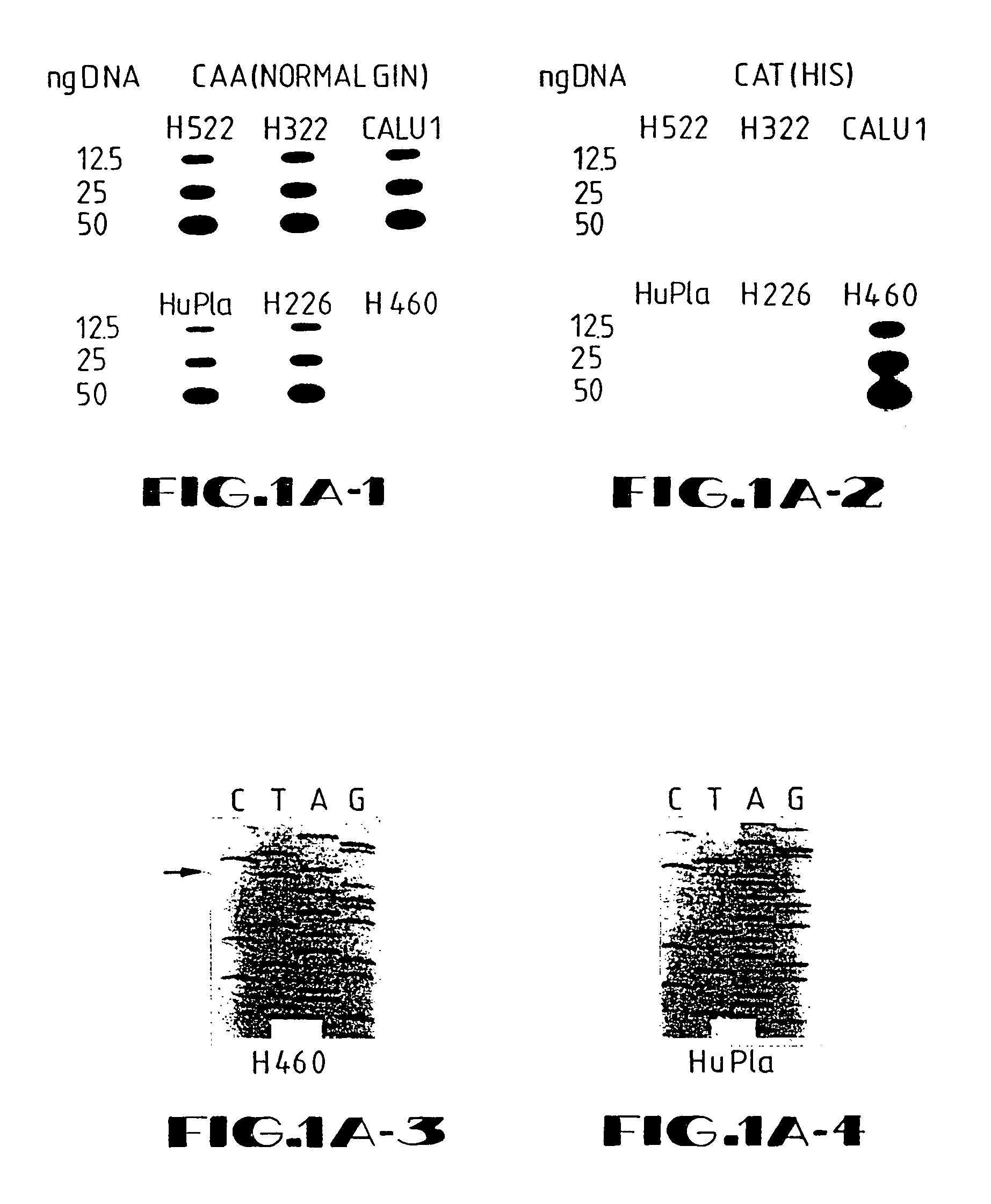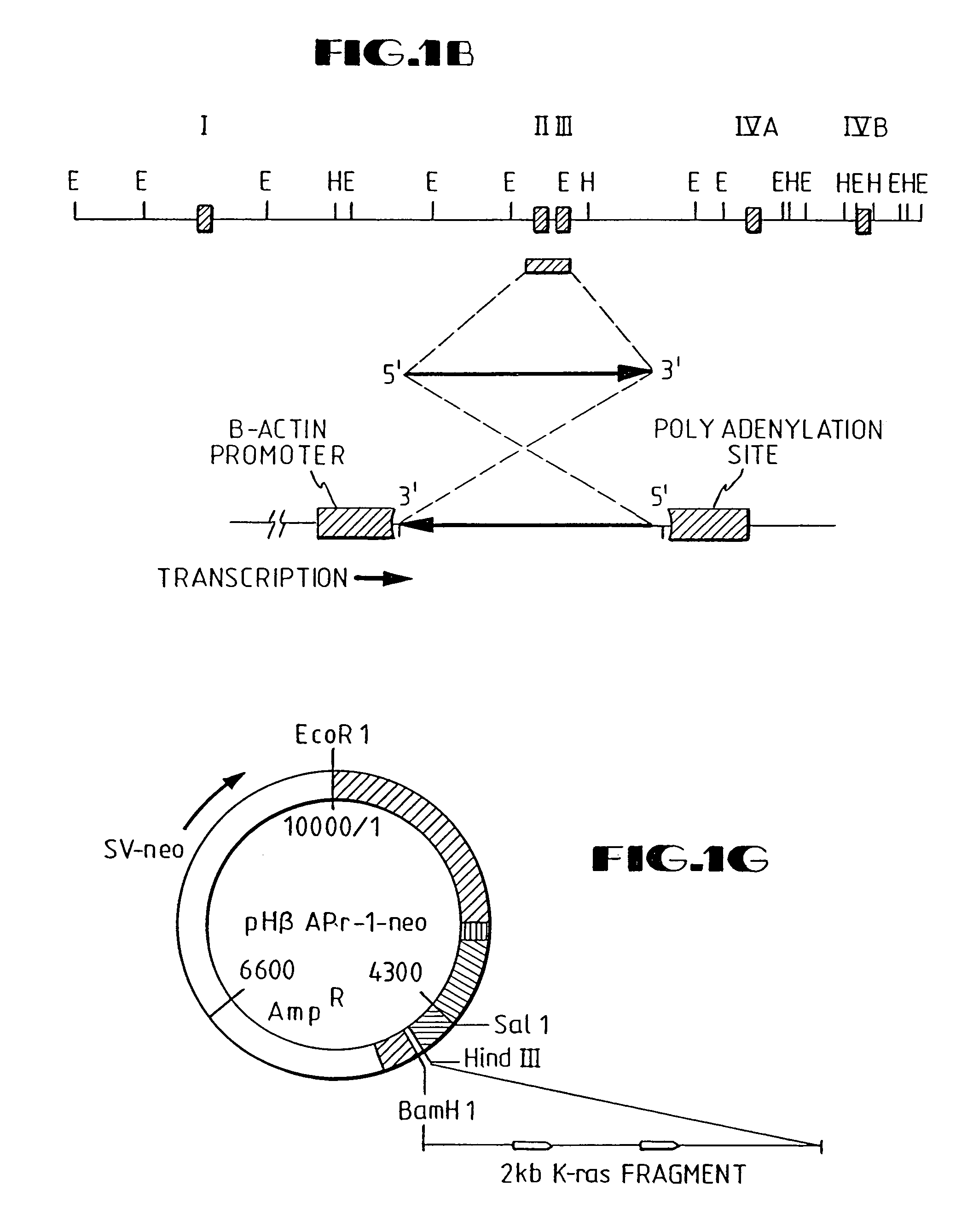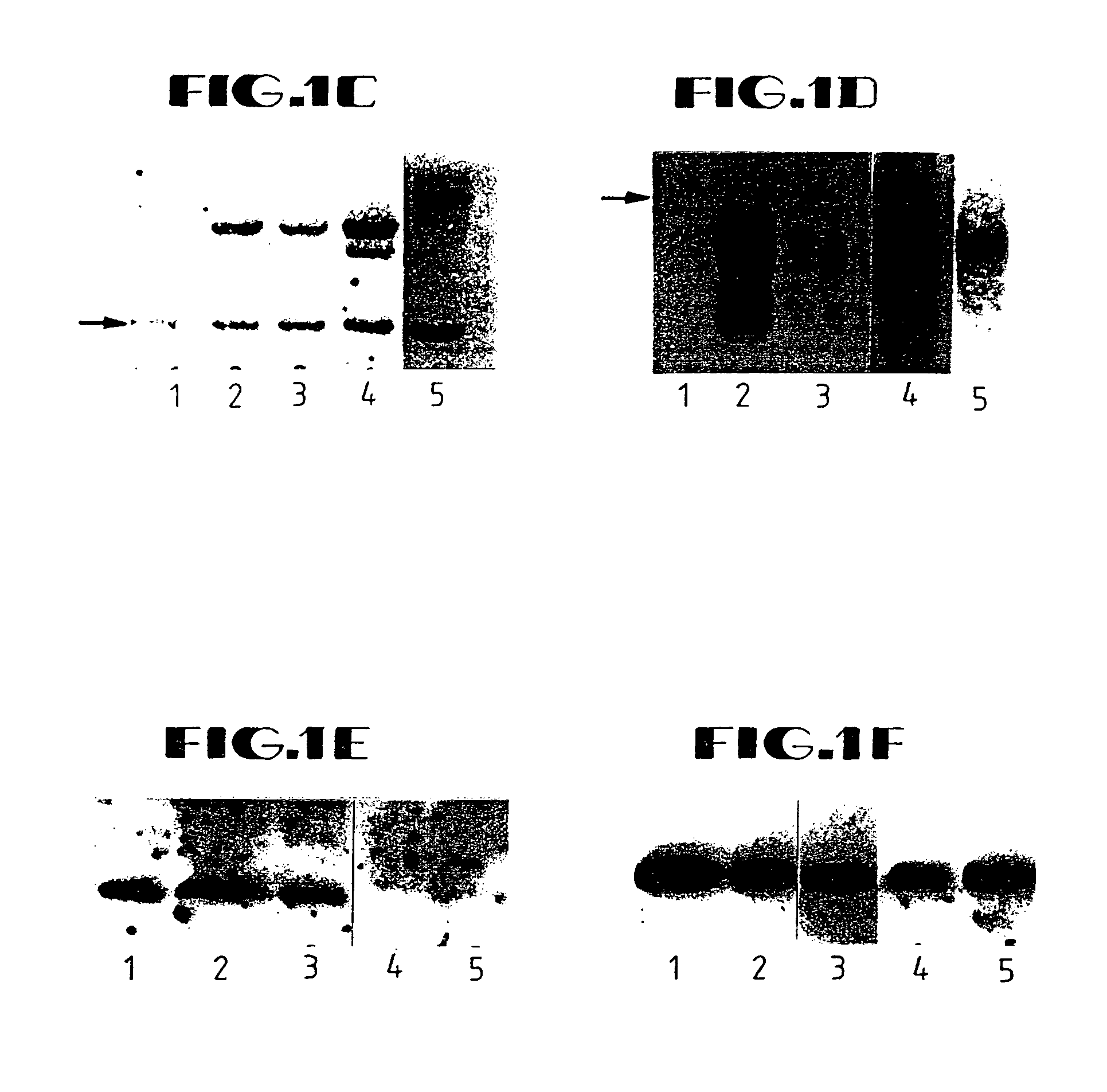Cancer treatment with retroviral vectors comprising wild-type p53
a technology of retroviral vectors and p53, which is applied in the direction of biocide, peptide/protein ingredients, genetic material ingredients, etc., can solve the problems of reducing the expression of antisense messages, reducing the expression of genes required for normal cellular functions, and not achieving the desired
- Summary
- Abstract
- Description
- Claims
- Application Information
AI Technical Summary
Benefits of technology
Problems solved by technology
Method used
Image
Examples
example i
Specific Inhibition of K-ras Expression and Tumorigenicity of Lung Cancer Cells by Antisense RNA
A. Introduction
[0103]A wide spectrum of human cancers harbor ras genes activated by a single point mutation (Barbacid, 1987; Rodenhuis, et al., 1987; Bos, 1989; Rodenhuis, et al., 1990; Mabry, et al., 1988; Santos, et al., 1984; Taya, et al., 1984; Cline, et al., 1987; Feig, et al., 1984; Vogelstein, et al., 1988; Kumar, et al., 1990). Despite considerable knowledge of the structural aspects of the ras gene product, the functional role in physiological and pathological processes remains elusive (Barbacid, 1987). Cellular location and structural and biochemical similarities to G proteins suggest that ras gene products are involved in signal transduction (Bos, et al., 1987; Hurley, et al., 1984). The present example describes the preparation and use of an antisense RNA construct to block selectively the production of the mutated protein in the human non-small cell lung cancer (NSCLC) cell l...
example ii
Retroviral Vector-Mediated Transduction of K-ras Antisense RNA into Human Lung Cancer Cells Inhibits Expression of the Malignant Phenotype
[0137]In overview, the present example illustrates a retroviral vector system that was developed by the inventors to efficiently transduce K-ras antisense constructs into human cancer cells. The 1.8-Kb K-ras gene fragment DNA in antisense (AS) orientation to a β-actin promoter was inserted into retroviral vector LNSX in two different orientations. The constructs were transfected into amphotropic packaging cell line GP+envAm12 followed by alternating infection between the ecotropic packaging cell line Ψ2 and GP+envAm12. Titers up to 9×106 CFU / ml were achieved without detectable replication-competent virus being produced. The human large cell lung carcinoma cell line H460a, which has a homozygous codon 61 K-ras mutation, was transduced, and a transduction efficiency of 95% was obtained after 5 to 7 repeated infections.
[0138]DNA polymerase chain reac...
example iii
Clinical Protocol for Modification of Oncogene and Tumor Suppressor Gene Expression in Non-Small Cell Lung Cancer
[0183]This example is provided to demonstrate a protocol for administering and assessing the efficacy and toxicity of the intralesional administration of retroviral constructs containing antisense (AS) K-ras (for tumors with mutated K-ras) and wildtype p53 (wtp53) (for tumors with mutated or deleted p53) into residual endobronchial NSCLC which obstructs a bronchus and which is refractory to conventional therapy.
A. Downregulation of Activated K-ras / Expression with an Antisense Construct
[0184]1. Gene Construct
[0185]The retroviral vector construct contains the AS-K-ras fragment with its β-actin promoter inserted into the LNSX vector (Miller et al., 1989; Palmer et al., 1987). The orientation of the insert is such that the transcription of the AS-K-ras is driven by the β-actin promoter in an orientation that is reverse with respect to transcription from the retroviral LTR.
[0...
PUM
| Property | Measurement | Unit |
|---|---|---|
| Concentration | aaaaa | aaaaa |
| Volume | aaaaa | aaaaa |
| Volume | aaaaa | aaaaa |
Abstract
Description
Claims
Application Information
 Login to View More
Login to View More - R&D
- Intellectual Property
- Life Sciences
- Materials
- Tech Scout
- Unparalleled Data Quality
- Higher Quality Content
- 60% Fewer Hallucinations
Browse by: Latest US Patents, China's latest patents, Technical Efficacy Thesaurus, Application Domain, Technology Topic, Popular Technical Reports.
© 2025 PatSnap. All rights reserved.Legal|Privacy policy|Modern Slavery Act Transparency Statement|Sitemap|About US| Contact US: help@patsnap.com



